Constituent Assembly of India Debates
Constituent Assembly of India Debates
Constituent Assembly of India Debates
You also want an ePaper? Increase the reach of your titles
YUMPU automatically turns print PDFs into web optimized ePapers that Google loves.
adapted under the provisions <strong>of</strong> the <strong>India</strong>n Independence Act.<br />
Sir, that is the present state <strong>of</strong> things. The Union Powers Committee met again<br />
after the 28th <strong>of</strong> April at a time when even the <strong>India</strong>n Independence Bill had not been<br />
introduced in Parliament. We knew <strong>of</strong> course that such a Bill was going to be<br />
introduced, but we were not quite sure at the time we settled our second report what<br />
the provisions <strong>of</strong> that Act would finally look like. Well, we did make that report. We<br />
have since had this Independence Act. What we have now is a Dominion and a<br />
Dominion if I may describe it--possibly it has, been described so in the adaptations <strong>of</strong><br />
the Government <strong>of</strong> <strong>India</strong> Act--I am not sure <strong>of</strong> it because we are yet to be supplied<br />
with copies <strong>of</strong> the Gazette Extraordinary which is supposed to have been issued on the<br />
14th night or the 15th morning: but I take it, Sir, that that adaptation describes this<br />
Dominion as a Union comprising those Provinces <strong>of</strong> what was British <strong>India</strong> as have not<br />
seconded into the new Dominion <strong>of</strong> Pakistan. It comprises also those <strong>India</strong>n States<br />
which have acceded to the Dominion. When I said Provinces, I should have referred to<br />
two kinds <strong>of</strong> provinces that we have in this country, namely, the Governors Provinces<br />
and the Chief Commissioners, Provinces. In addition to that, there may be other areas<br />
which may be included in the Dominion. Thus we have really a Federal Union now in<br />
this country, and that Federal Union will have to be administered in accordance with<br />
the provisions <strong>of</strong> the <strong>India</strong>n Independence Act and the Government <strong>of</strong> <strong>India</strong> Act as<br />
modified. Now, Sir, we, in this report <strong>of</strong> the Union Powers Committee, have nothing to<br />
do with the Federal Union which now exists. What we are attempting to establish is a<br />
Federation in the future, and, in considering what that Federation should be, we have<br />
got to take note <strong>of</strong> the essentials that any Federal Constitution has to provide for, and<br />
one <strong>of</strong> the essential principles <strong>of</strong> a Federal Constitution is that it must provide for a<br />
method <strong>of</strong> dividing sovereign powers so that the Government at the Centre and the<br />
Governments in the Units are each within a defined sphere, co-ordinate and<br />
independent. Perhaps I may quote for the information <strong>of</strong> the House the definition in<br />
orthodox terms <strong>of</strong> what a Federation should be as visualized by thinkers on political<br />
science, by people who have engaged themselves in the framing <strong>of</strong> Federal<br />
constitutions. Here, for instance, is a description which I take from the Report <strong>of</strong> the<br />
Royal Commission on the Australian Constitution in 1929. For this definition the person<br />
responsible was Sir Robert Garran, a name very well known in the history <strong>of</strong> Federal<br />
Constitutions. He describes Federation as "a form <strong>of</strong> government in which sovereignty<br />
or political power is divided between the central and local governments so that each <strong>of</strong><br />
them, within its own sphere, is independent <strong>of</strong> the other". I call this, Sir, an orthodox<br />
definition because, if we look round the world and look at the Federal constitutions<br />
that are actually in being, I am almost sure that not one <strong>of</strong> them will be found to<br />
conform rigidly to the actual terms <strong>of</strong> this definition. The line between the Centre and<br />
the Units is not so definitely fixed as this definition would assume. There are relations<br />
between the Centre and the Units There are cases where the Units have to depend<br />
upon the Centre. There are controlling powers vested in the Federation in<br />
emergencies, when the Federation could override the jurisdiction <strong>of</strong> the Units and take<br />
over things into its own hands: so that this absolute independence <strong>of</strong> functioning,<br />
which is contemplated in the definition, has not been realised in practice. But there is<br />
one fact which stands out in the history <strong>of</strong> Federations, and that is this: it is necessary<br />
for us to demarcate the sphere within which the Centre on the one hand and the Units<br />
on the other could exercise sovereign powers, and that is really at the back <strong>of</strong> all the<br />
attempts that have been made in the various Federations to demarcate the subjects<br />
which should be assigned to the Centre and the subjects which should be assigned to<br />
the Units or retained by the Units, or retained by the Units, according to the view that<br />
is taken as to where residuary power should finally be lodged.


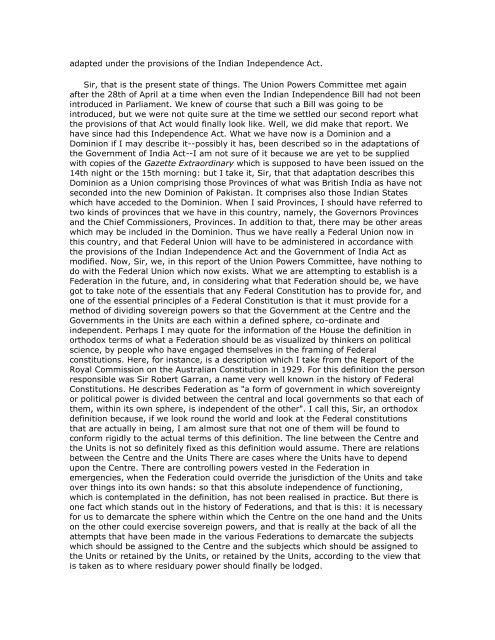
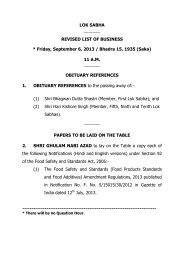
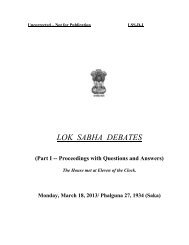

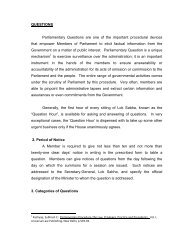
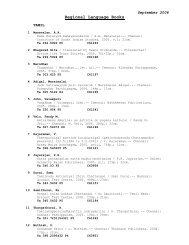

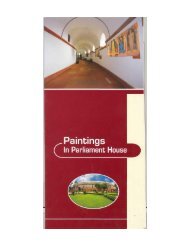
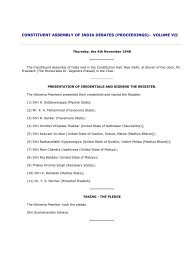
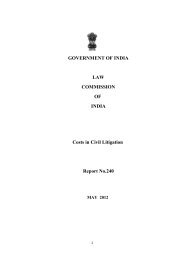
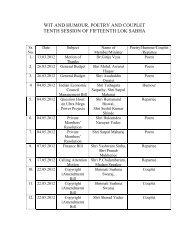
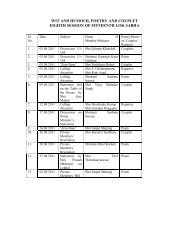

![gÉÉŌ A.]ÉŌ. xÉÉxÉÉ](https://img.yumpu.com/8015720/1/190x245/geeo-aeo-xeexee.jpg?quality=85)
